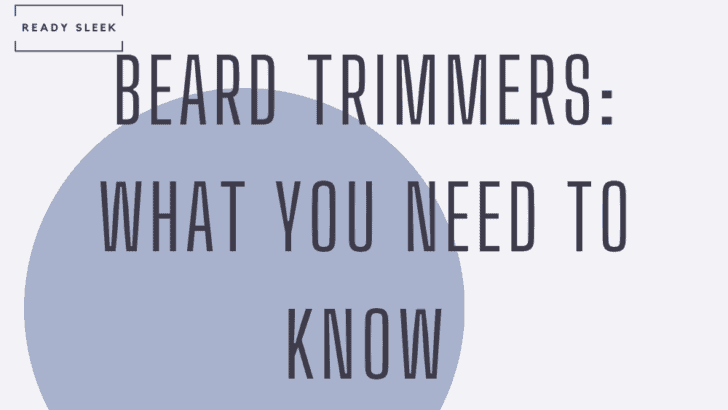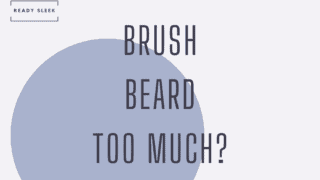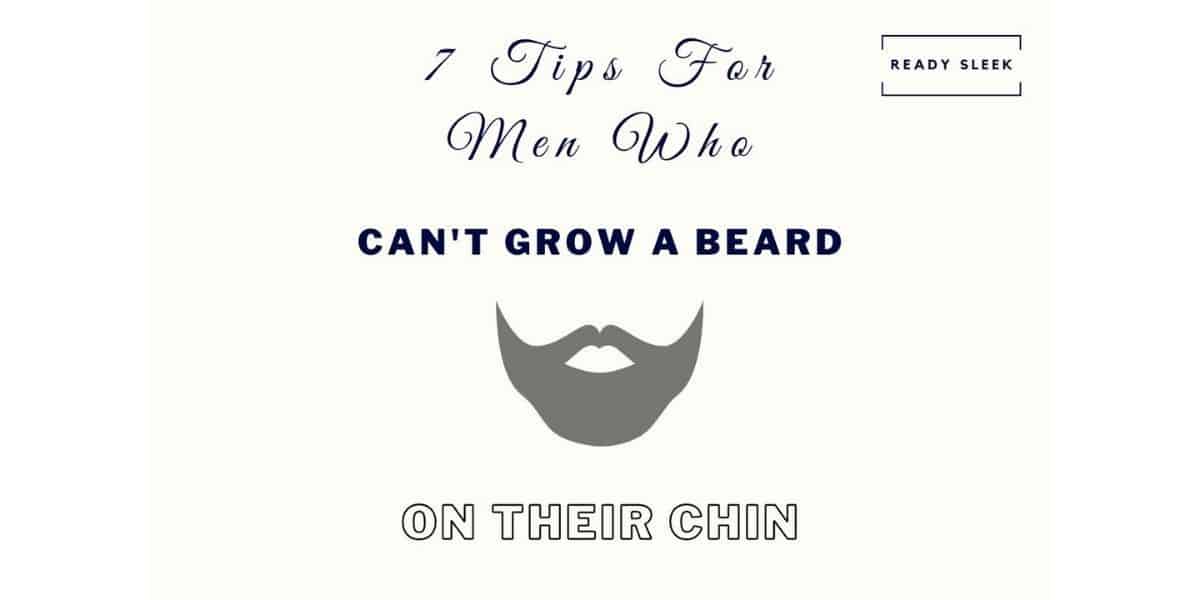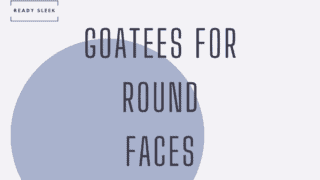As far as grooming tools go, it’s one you should get familiar with fast. Learning the ins and outs of your beard trimmer will ensure you look after it, improve your results, and also save your time.
Most people have a pretty good grip on the basics of how a beard trimmer works. After all, it isn’t rocket science.
But there are plenty of questions about beard trimmers that are important and frequently asked, yet rarely answered.
Let’s get to it.
1. What Do The Numbers On Beard Trimmers Mean?
The numbers on a beard trimmer indicate what length it will trim down to. They could be the actual lengths in millimeters or inches, or they could be numbers that correspond to specific lengths.
Beard trimmers are usually more likely to come with length guards labeled with the actual length in millimeters rather than “grades” such as Number 1 (#1), Number 2 (#2), and so on. This grading system is more commonly found with hair clippers.
But why is it important?
The numbers on a beard trimmer are important to note because they may influence whether you should buy it or not.
It’s crucial to know what length options your beard trimmer comes with before you buy it. Otherwise, you may end up in a position where you’re not able to trim down as short or as long as you might like.
It’s also vital to know whether the numbers on your specific trimmer are “grades” that correspond to lengths, or the actual lengths themselves.
Many men make the mistake of confusing the two and end up trimming their beard way shorter than they’d expected.
For instance, a Number 3 length guard usually equates to 9mm, not 3mm.
Your trimmer’s instruction booklet should clear this up for you and let you know exactly what the numbers refer to on your specific trimmer.
2. Is A Beard Trimmer The Same As A Shaver?
A beard trimmer is not the same as an electric shaver. Beard trimmers do not cut the hair as close to the skin as electric shavers do. Shavers typically have rotating or oscillating blades that give you a “closer shave” than a beard trimmer would.
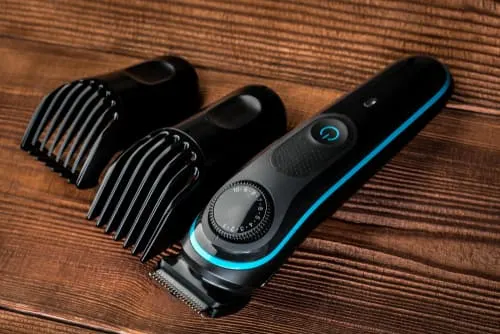
Beard trimmers work using the same mechanism as hair clippers; two comb-like blades sliding sideways relative to each other. The hair gets trapped and cut in between the teeth of the blades.
Attachable length guards are used to vary the length of hair that gets positioned in between the blades and then cut.
They often also come with additional attachments that allow for different functions, such as detailing and outlining.
Electric shavers are, in a way, simpler – their sole purpose is to give you a close shave.
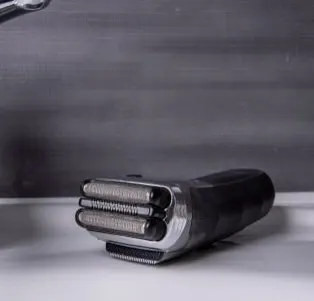
[From Shutterstock]
The two main types of electric shaver are “foil” and “rotary”. Foil shavers have a rectangular head with oscillating blades, while a rotary head contains two or three spinning discs that cut the hair.
Foil shavers typically give you a closer shave on the cheeks than a rotary shaver would. However, foil shavers aren’t as good as rotary shavers for contouring awkward areas.
3. How Much Should You Spend On A Beard Trimmer?
Beard trimmers are generally cheaper than hair clippers. Low-end beard trimmers can usually be bought for around $30, while high-end ones are still often less than $100.
How much you should spend will depend on your budget, as well as your preferences.
Features such as being cordless, waterproof, or having digital displays will bump up the price, as will the variety of available length settings and attachments.
If all you want is a simple beard trimmer with a single attachment and only a few length settings, go for a low-to-mid range one costing between $30-$50.
4. What Oil Should You Use On A Beard Trimmer?
The oil used to lubricate the blades of a beard trimmer should be low-viscosity (thin) and able to withstand high temperatures. Mineral oil and baby oil are good options if your beard trimmer didn’t come with any.
A lot of clippers and trimmers will come with their own oil which makes it simple – just use that. It’s usually just refined mineral oil.
Alternatively, you could buy some Wahl clipper oil (Amazon Link) and use that. It may cost you a little more than DIY alternatives like basic mineral oil or baby oil, but at least you know it’s high-quality.
Whatever you do, it’s just important that you do it regularly. Not oiling the blades of a beard trimmer regularly is a common reason for wearing them out prematurely.
The friction will cause unnecessary wear and tear of the blades – they’ll eventually stop trimming as effectively and start tugging and pulling. Essentially, the beard trimmer just won’t last as long as it otherwise could.
Oiling it will give you better trims and save you money as you won’t need to keep buying more.
The oil you use should be low-viscosity so it can seep in and around the blades effectively without clogging it up.
It should also be able to withstand high temperatures. The oscillating blades of a trimmer slide past each other extremely fast; this friction will produce a lot of heat.
5. How Often Should You Oil A Beard Trimmer?
Ideally, oil should be used on a beard trimmer before each and every trim. If this isn’t practical or possible, doing it twice a month would be reasonable.
But essentially, the more you do it, the better. It only takes a couple of minutes to do – beard trimmer maintenance really isn’t time-consuming.
Brushing the hair out from between and under the blades is another great maintenance habit to get used to.
If you do it, it should be done before oiling the blades. The oil would simply cause the accumulated hair to gunk up and clog.
6. Do Beard Trimmers Go Blunt?
Beard trimmers do go blunt with repeated use over time. The blades become dulled due to the friction and may eventually stop trimming as effectively. Regular oiling and brushing is the key to a long-lasting trimmer.
Having said this, beard trimmers from trusted brands are reliable and sometimes last long even with subpar maintenance.
The blades are usually made from durable metals such as stainless steel, titanium, or even ceramic.
It can be difficult to know when your beard trimmer is going blunt. It isn’t quite as easy as knowing when a manual razor is going blunt, for instance.
Tell-tale signs that your beard trimmer is going blunt include the blades starting to pull and tug as you trim.
Ultimately, using a beard trimmer with blunted blades is never going to be effective.
7. How Close Do Beard Trimmers Cut?
Beard trimmers cut as close as the length of the blade will allow. This will usually be between 0.4mm and 0.8mm. You should expect short stubble of this length being left behind when using a beard trimmer with no length guard attached.
The short stubble left behind when you trim using the naked blade of a beard trimmer will look more like a 5 o’clock shadow.
8. How Long Do Beard Trimmers Last?
Mid-range to high-end beard trimmers can even last upwards of a decade if properly maintained with regular oiling and brushing of the blades.
Other than maintenance, how often you use it will also play a role in estimating how long it’ll last.
If you only use it two or three times a month, it’s obviously going to last longer than if you use it every day. The more you use it, the more wear-and-tear of the blades you can expect.
As time goes on, the attachment guards (length guards) may start to wear or even chip.
This is less of a problem than blunted blades as you should be able to buy attachment guards separately online without needing to buy a whole new beard trimmer.
Just make sure the length guards you buy will attach to your specific beard trimmer.
How often you replace a beard trimmer will depend on maintenance and frequency of use.
9. Can You Return Beard Trimmers?
If a beard trimmer that is not faulty has been used or even just unsealed, it will usually not be possible to return it. This is because it won’t be suitable for resale due to hygienic reasons.
It may not have even been used, but the fact that the packaging was unsealed will most likely mean you can’t return it as it’s a personal care item and there’s no way of knowing for sure that it hasn’t been used.
If, however, the beard trimmer is faulty, most merchants will allow you to return it for a full refund as long as it’s done within a certain period of time. The specifics will, of course, depend on the merchant.
Conclusion
There you have it. As you can see, it wasn’t an in-depth tutorial on how to use a beard trimmer. There are plenty of those out there already.
Instead, I wanted to simply list some random but frequently asked questions on beard trimmers.
Hopefully, you found what you were looking for and plenty more to go with it.
Enjoy.
Ready Sleek founder. Obsessed with casual style and the minimalist approach to building a highly functional wardrobe. Also a fan of classic, vintage hairstyles.

